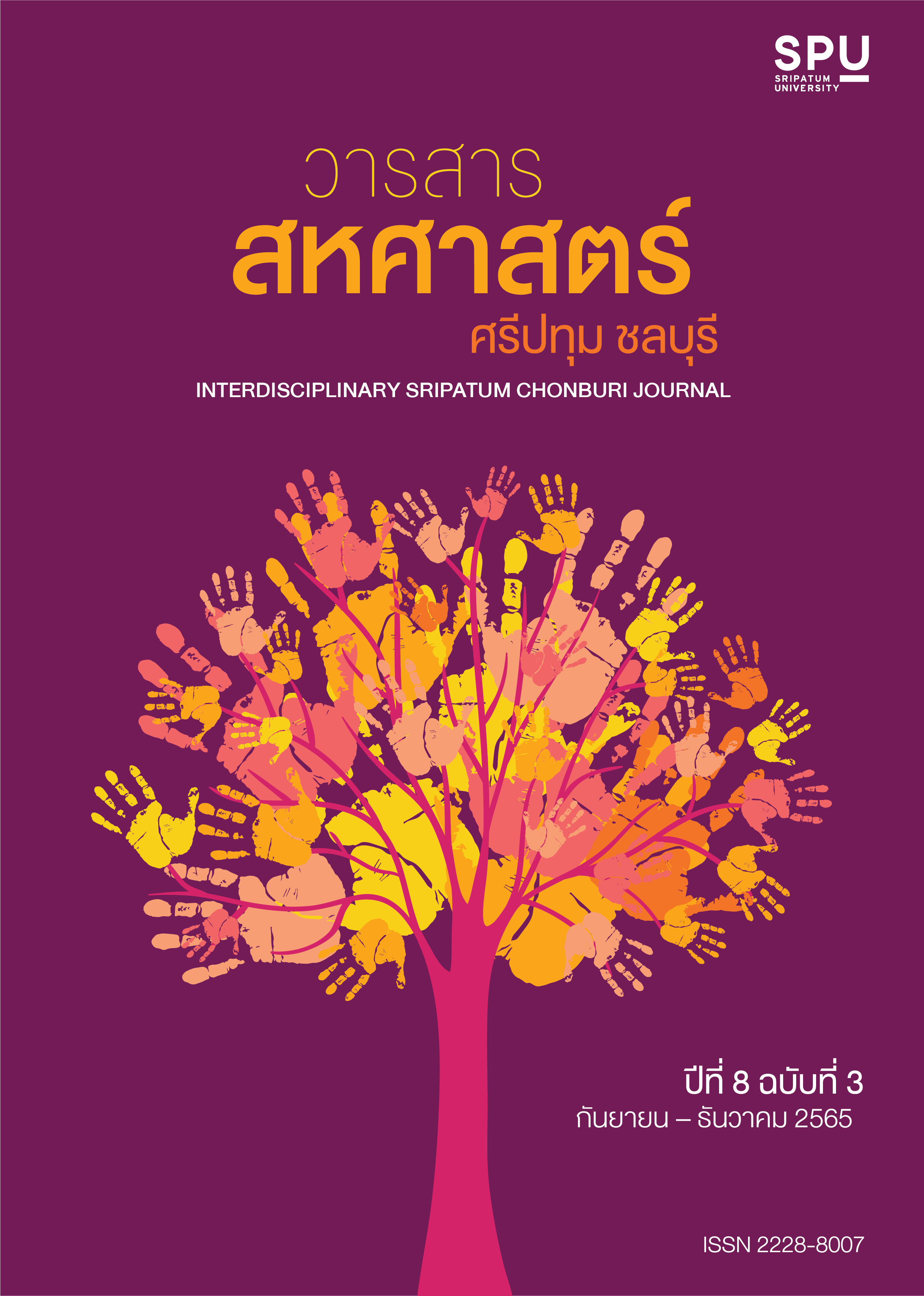The Service Quality Assessment Of U-TAPAO Airport Based On Social Media Opinion
Keywords:
service quality, U-Tapao airport, sentiment analysis, importance-performance analysis, online reviewAbstract
The purpose of this study is to assess the service quality of U-Tapao Airport by collecting data from the online social media opinions of users towards U-Tapao Airport. During the period between 1 January 2017 and 31 December 2019, 68 opinions in the Thai language and 98 comments in English were obtained, for a total of 166 opinions. The opinions were analyzed by using Sentiment analysis technique and prioritizing the development of U-Tapao Airport service to impress passengers using the Importance-performance analysis method. Service attributes can be classified into four groups. This study found that U-Tapao Airport needs to improve access. Because passengers pay attention to this topic, but they are not impressed with this service. The outstanding attribute that should be maintained is airport facilities.
References
ท่าอากาศยานอู่ตะเภา. (2565). สถิติผู้โดยสาร ปี 2558-2565 (ออนไลน์). เข้าถึงได้จาก
https://www.utapao.com/corporate/th/about-us/utpstat [2022, August 31].
นุชาวดี สุขพงษ์ไทย และจิราภา พึ่งบางกรวย. (2563). อิทธิพลของความสะดวกในการบริการที่มีผลต่อ
ความพึงพอใจในการใช้บริการสนามบินนานาชาติอู่ตะเภา จังหวัดระยอง. วารสารการจัดการธุรกิจ
มหาวิทยาลัยบูรพา, 9(1), หน้า 71-85.
มาสวีร์ มาศดิศรโชติ. (2557). การทำเหมืองความคิดเห็นภาษาไทย. ศรีปทุมปริทัศน์ ฉบับวิทยาศาสตร์
และเทคโนโลยี, 6(1), หน้า 120-128.
ศิริวรรณ ไชยสูรยกานต์ และศรัณย์ ดั่นสถิตย์. (2564). การประเมินคุณภาพการให้บริการของท่าอากาศยาน
สุวรรณภูมิจากความคิดเห็นในสื่อสังคมออนไลน์ด้วย Importance-performance Analysis.
วารสารการบัญชีและการจัดการ มหาวิทยาลัยมหาสารคาม, 13(2), หน้า 93-108.
สำนักงานคณะกรรมการนโยบายเขตพัฒนาพิเศษภาคตะวันออก. (2565). สนามบินอู่ตะเภาและเมือง
การบินภาคตะวันออก (ออนไลน์). เข้าถึงได้จาก https://eeco.or.th/th/utapao-airport-and-
the-eastern-aviation-city [2022, August 31].
สิทธิชัย ศรีเจริญประมง. (2561). แนวทางการออกแบบบริการของท่าอากาศยานนานาชาติอู่ตะเภา
สู่ความเป็นเลิศ. วารสารการจัดการ มหาวิทยาลัยวลัยลักษณ์, 7(1), หน้า 55-70.
Azzopardi, E., & Nash, R. (2013). A critical evaluation of importance–performance analysis.
Tourism management, 35, pp. 222-233.
Barakat, H., Yeniterzi, R., & Martín-Domingo, L. (2021). Applying deep learning models to
twitter data to detect airport service quality. Journal of Air Transport Management, 91, 102003.
Becker, I., Parkin, S., & Sasse, M. A. (2016). Combining qualitative coding and sentiment
analysis: Deconstructing perceptions of usable security in organisations. In The
LASER Workshop: Learning from Authoritative Security EXperiment Results
(LASER 2016) (pp. 43-53). USENIX.
Bi, J. W., Liu, Y., Fan, Z. P., & Zhang, J. (2019). Wisdom of crowds: Conducting importance-
performance analysis (IPA) through online reviews. Tourism Management, 70, pp. 460-478.
Bogicevic, V., Yang, W., Bilgihan, A., & Bujisic, M. (2013). Airport service quality drivers of
passenger satisfaction. Tourism Review, 68(4), pp. 3-18.
Chen, J., Becken, S., & Stantic, B. (2022). Assessing destination satisfaction by social media:
An innovative approach using Importance-Performance Analysis. Annals of
Tourism Research, 93, 103371.
Dhini, A., & Kusumaningrum, D. A. (2018, December). Sentiment analysis of airport customer
reviews. In 2018 IEEE International Conference on Industrial Engineering and
Engineering Management (IEEM) (pp. 502-506). IEEE.
Gitto, S., & Mancuso, P. (2017). Improving airport services using sentiment analysis of the
websites. Tourism Management Perspectives, 22, pp. 132-136.
Greaves, F., Ramirez-Cano, D., Millett, C., Darzi, A., & Donaldson, L. (2013). Harnessing the
cloud of patient eXperience: using social media to detect poor quality healthcare.
BMJ quality & safety, 22(3), pp. 251-255.
Guo, Y., Barnes, S. J., & Jia, Q. (2017). Mining meaning from online ratings and reviews:
Tourist satisfaction analysis using latent dirichlet allocation. Tourism management, 59,
pp. 467-483.
Halpern, N., & Graham, A. (2021). Airport marketing. London, UK: Routledge.
Halpern, N., & Mwesiumo, D. (2021). Airport service quality and passenger satisfaction: The
impact of service failure on the likelihood of promoting an airport online.
Research in Transportation Business & Management, 41, 100667.
Ketjutarat, C. (2020). Passenger perspective of satisfaction in LCC in Don Mueang Airport,
Thailand. Journal of Local Governance and Innovation, 4(3), pp. 201-218.
Kiliç, S., & Çadirci, T. O. (2022). An evaluation of airport service eXperience: An identification
of service improvement opportunities based on topic modeling and sentiment
analysis. Research in Transportation Business & Management, 43, 100744.
Lacic, E., Kowald, D., & LeX, E. (2016, July). High enough? EXplaining and predicting traveler
satisfaction using airline reviews. In Proceedings of the 27th ACM Conference on
HyperteXt and Social Media (pp. 249-254). New York: Association for Computing Machinery.
Lee, K., & Yu, C. (2018). Assessment of airport service quality: A complementary approach
to measure perceived service quality based on Google reviews. Journal of Air
Transport Management, 71, pp. 28-44.
Martilla, J. A., & James, J. C. (1977). Importance-performance analysis. Journal of marketing,
(1), pp. 77-79.
Martin-Domingo, L., Martín, J. C., & Mandsberg, G. (2019). Social media as a resource for sentiment
analysis of Airport Service Quality (ASQ). Journal of Air Transport Management,
, pp. 106-115.
Mimbs, B. P., Boley, B. B., Bowker, J. M., Woosnam, K. M., & Green, G. T. (2020). Importance-
performance analysis of residents' and tourists’ preferences for water-based
recreation in the Southeastern United States. Journal of Outdoor Recreation and
Tourism, 31, 100324.
Misopoulos, F., Mitic, M., Kapoulas, A., & Karapiperis, C. (2014). Uncovering customer service
eXperiences with Twitter: the case of airline industry. Management Decision, 52(4),
pp. 705-723.



